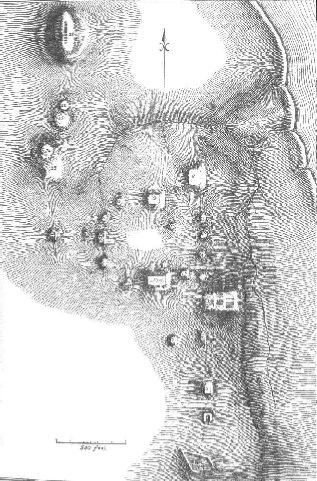ArchaeoTrek Once There Were Nearly 50 Mounds In St. Louis—Now There Is One By Dr. Greg Little (Greg Little is author of The Illustrated Encyclopedia of Native American Mounds & Earthworks. Reconstructions of the St. Louis mounds can be found in the book.) Indian mounds probably don't come to mind when someone says "St. Louis," but until the early 1800's St. Louis was known as "Mound City." In 1819 T. R. Peal surveyed nearly 30 mounds arranged around several rectangular plaza areas located at a riverfront area close to where the famous St. Louis Arch exists today. Another 20 or so mounds were scattered around the rivers in the city area. Archaeologists theorize that the complex of mounds at St. Louis was associated with the Cahokia culture centered a few miles away on the other side of the Mississippi River in Cahokia, IL. By 1904 all of the St. Louis mounds were completely destroyed by construction projects—except for one. Sugarloaf Mound (or Sugar Loaf), located at 4420 Ohio Street in south St. Louis, is a temple mound that was preserved because a home was built on its top in 1928. The house was sold in 1962 to a couple who wanted to preserve the mound. On July 31, 2009 the Osage Nation purchased the mound and home with plans to create a museum and preserve the site. The mound can actually be seen from nearly interstate 55 as it sits high above the other structures. Covering 3 city lots, the multi-level platform is 40-feet high with a curved rectangular base of 100 by 75 feet. It is the lone reminder of a once immense complex of mounds sadly obliterated by what was once seen as progress. The Osage Nation is to be commended for the hopefully permanent preservation of the mound. | ||
Peal's 1890 survey of the St. Louis mound complex. | ||||
 | ||||